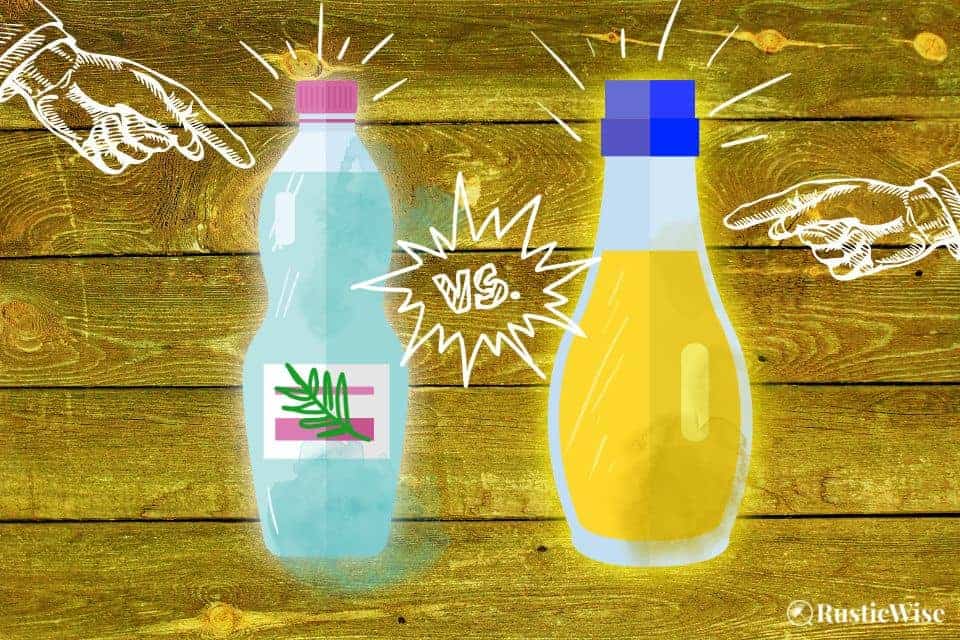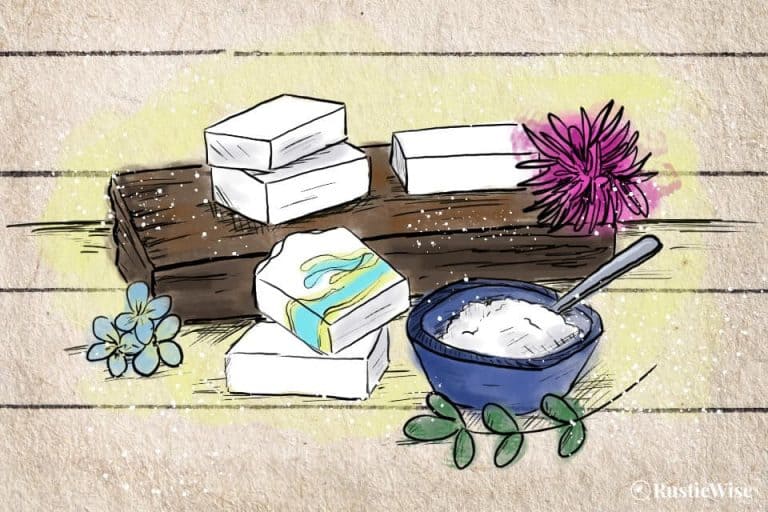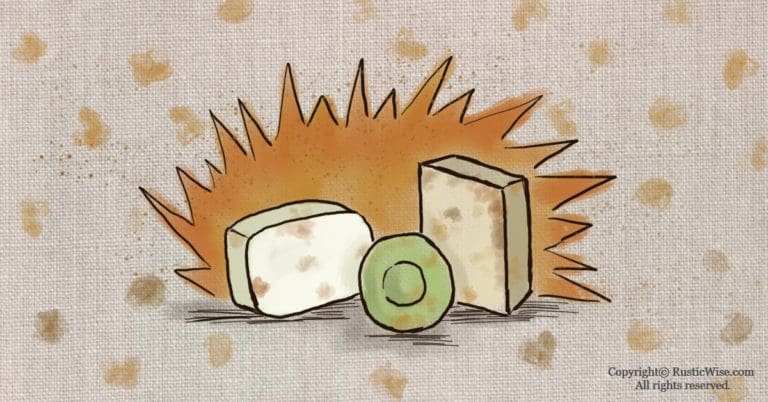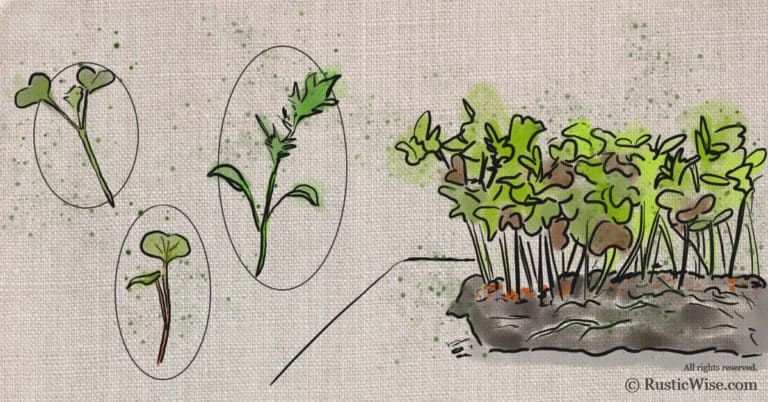Is Vegetable Glycerin the Same as Vegetable Oil? Common Uses + Benefits
Is vegetable glycerin the same as vegetable oil? No, these two substances are not the same. Vegetable glycerin, sometimes called glycerol, or glycerine, is a clear sugar alcohol derived from vegetable oils such as palm oil, coconut oil, or soy oil. Vegetable oil is a type of fat made from pressed plant parts (often the seeds) of various plants, including canola, corn, olive, soybean, and sunflower.
Read more about key similarities and differences between vegetable glycerin and vegetable oil, and a closer look at vegetable glycerin uses.
A closer look at glycerin
What does vegetable glycerin look like? Colorless, odorless, and with a slightly sweet taste, glycerin is a type of organic compound that falls under the sugar alcohol group. It has a syrup-like consistency and is non-toxic.¹
When used in foods, it’s considered a carbohydrate.
Glycerin has many uses in the food industry, soap and cosmetics, as well as the pharmaceutical industry.
The chemical formula for glycerin is: C₃H₈O₃. It contains three carbon atoms, eight hydrogen atoms, and three oxygen atoms.
Is glycerol the same thing as glycerin?
Glycerin is also called glycerol. While these two compounds are essentially the same, in order for something to be labeled “glycerin” it must contain at least 95 percent glycerol.²
In 1783, a chemist named Carl Wilhelm Scheele first isolated the substance known as glycerin or glycerol. The term glycerin was coined in 1811 by Michel-Eugène Chevreul, a French chemist.²
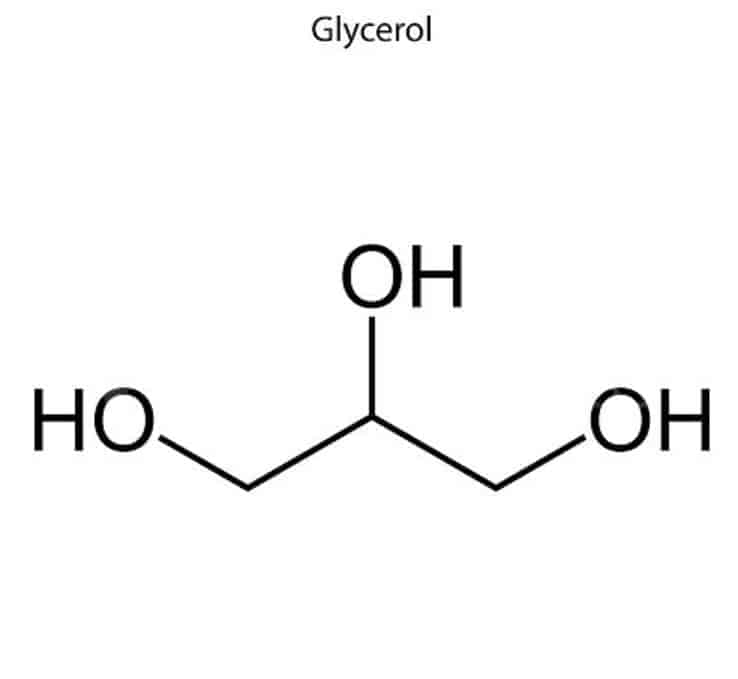
Key differences: is vegetable glycerin the same as vegetable oil?
While both vegetable glycerin (VG) and vegetable oil (VO) are natural compounds derived from plants, there are key differences. Let’s take a closer look.
Vegetable glycerin:
- Description: A type of sugar alcohol.
- Color: Clear and colorless.
- Properties: VG is a humectant which draws and retains moisture. It also acts as a solvent, sweetener and softener.
- Common uses: Used for commercial applications. In the food industry, glycerin adds sweetness and helps lock in moisture. In soap and cosmetic products, it’s used to moisturize skin. In pharmaceuticals, it enhances the texture and taste of medicines. It’s also used for a variety of DIY liquid soaps, body care products, and herbal extracts.
- Extraction: Vegetable glycerin is produced and extracted through the saponification (soap making) process. It’s also extracted through other means, such as hydrolysis.
Vegetable oil:
- Description: A type of plant-based fat.
- Color: Ranges from white to golden yellow, and various shades of brown and green depending on the type of vegetable oil.
- Properties: Every vegetable oil contains a unique fatty acid profile which gives each unique qualities.
- Common uses: Used for cooking and seasoning food, as well as other applications such as soap making, candle making, and as an ingredient in personal care products.
- Extraction: Vegetable oil is extracted through mechanical pressing or chemical solvent extraction of plant components.
The takeaway: Vegetable glycerin is produced from a variety of vegetable oils. In other words, VG is a byproduct of vegetable oils via hydrolysis or other means.
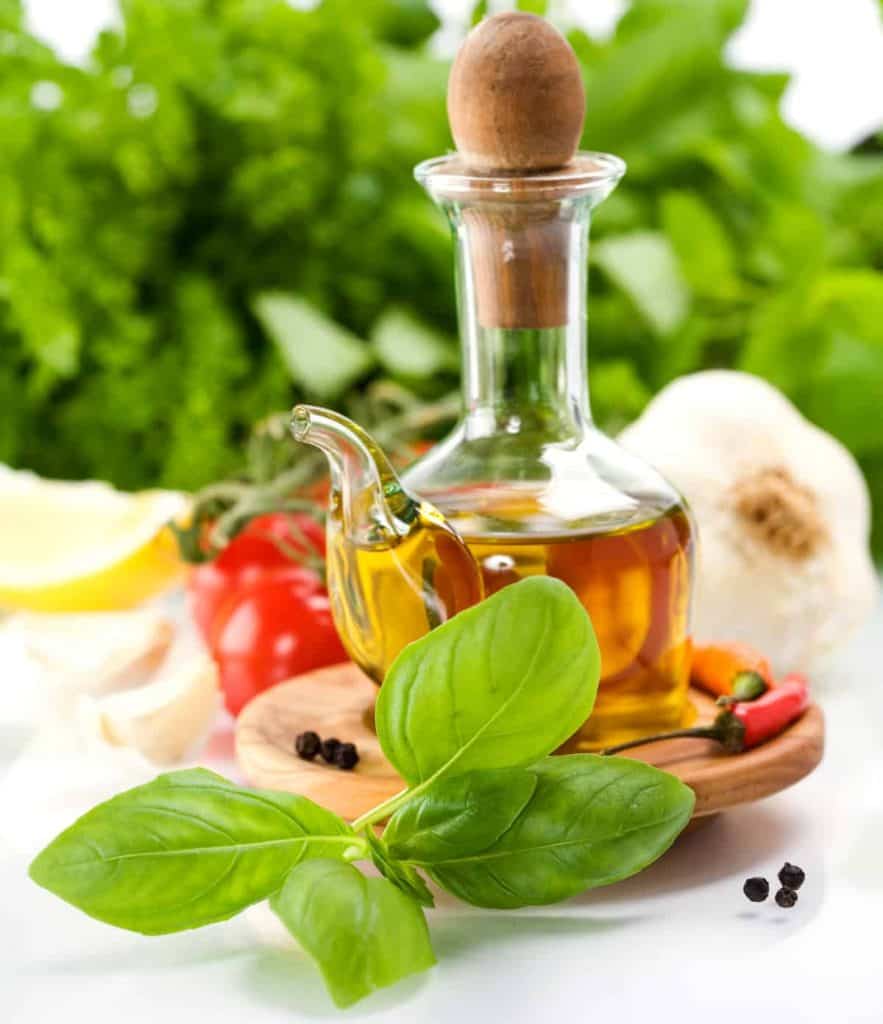
Credit: Yay Images
How is vegetable glycerin made?
There are different ways to produce VG: through saponification or hydrolysis.
The saponification process produces natural glycerin
If you’ve ever made natural soap from scratch using the cold or hot process methods, you’ve made glycerin.
Glycerin is a natural product of the saponification process (which is a scientific term for converting fats into soap molecules).
When you combine fats, oils, or butters with a strong alkali such as sodium hydroxide lye, it produces soap. The triglycerides from the fats produce a byproduct which is glycerin.
Homemade soap bars are packed with skin nourishing glycerin.
Commercial producers also produce vegetable glycerin in the same manner (but on a much larger scale), by combining fats with lye to produce soap. Producers extract the glycerin for other uses.
If you make melt and pour soap at home, you can buy VG soap bases to produce your own soaps. These glycerin bases are great if you want to make transparent soaps.
Vegetable glycerin produced through hydrolysis extraction
Hydrolysis is a process where vegetable oils are combined with water under high heat and pressure. The heat and pressure work to break down the compounds or ester bonds in fatty acids found in vegetable oils. The glycerin eventually separates from the fatty acids to produce crude glycerin, water, and oil.³
The crude glycerin is then further distilled and filtered to produce the finished product. Most high quality glycerin products contain less than 2 percent water and over 98 percent glycerol.
Hydrolysis doesn’t require the use of any chemical solvents.
Fermentation
Less commonly, manufacturers may produce VG through the fermentation of yeast, sugar or starch.
You can find naturally occurring glycerin in many fermented foods such as beer, honey, vinegar, and wine.⁴
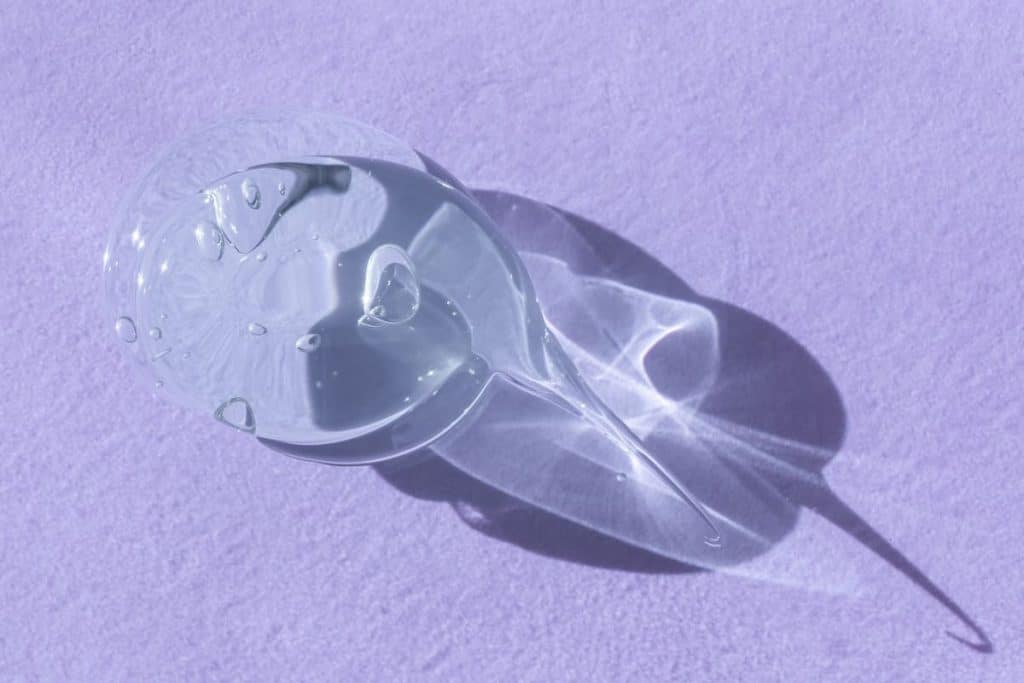
Credit: Yay Images
What’s the difference between glycerin and vegetable glycerin?
There are three types of glycerin:
- Plant-based or vegetable glycerin.
- Animal-based glycerin.
- Synthetic glycerin (often derived from corn syrup, cane sugar, or propylene which is a petroleum derivative).
While most glycerin produced today derives from plants, some come from animal products such as lard or tallow.
If you’re looking for vegan-friendly products, ensure your glycerin is from plant oils.
Common uses for vegetable glycerin
Vegetable glycerin is a versatile substance used for a variety of purposes.
Skincare, personal care products, cosmetics, and soap
Glycerin is found in many cosmetic products, such as shaving cream, body lotion, bar soap, liquid soap, and toothpaste. According to the U.S. Food and Drug Administration’s (FDA) Voluntary Cosmetic Registration Program, glycerin is the third most commonly used ingredient found in cosmetics.¹
It’s added to cosmetics for its humectant properties, which means it moisturizes skin from the inside out. It’s also used as a solvent and lubricant. Vegetable glycerin oil for skin soothes and seals moisture in the skin to provide a natural barrier against irritants. It can also help maintain the skin’s softness and smoothness.
Glycerin vegetable oil for hair serves a similar purpose. It also helps to thicken shampoos and conditioners.
Food and beverages
The FDA classifies glycerol as generally recognized as safe (GRAS) when used as a food additive.¹
In food and beverages, you’ll find glycerin used to add a touch of sweetness, improve smoothness and texture, and lock in moisture. Look at the ingredients label on most low-fat food products and you’ll likely see glycerol used as a sweetener.
Pharmaceutical products
A drop of glycerol makes the medicine go down! This is why you’ll see glycerol used in a wide range of medicines, including common cough syrups and pills. The improved smoothness and sweetness makes medicine more palatable.
Is vegetable glycerin healthy?
VG is safe to consume in small amounts. It’s a type of carbohydrate in the sugar alcohol family. Most sugar alcohols are less sweet than regular sugar; you’ll find glycerin is only 60 to 75 percent as sweet.⁴
In terms of calories, it contains more per gram than sugar:
- Glycerin: 4.32 calories per gram
- Sugar: 3.87 calories per gram
The body’s small intestine readily absorbs glycerin. This means you won’t experience a spike in insulin secretion, and your body’s glucose levels remain relatively lower compared to other sugars.
If you eat large amounts of glycerin, you may experience nausea, headache, or an upset stomach. You may also feel thirsty.
The takeaway: VG is a common ingredient found in processed foods such as cakes, cookies, marshmallows, sugary beverages, dried fruits, and condiments. These are foods you should eat in moderation.
Where to buy vegetable glycerin
You can find VG in most large grocery stores and pharmacies grouped together with other skincare products. It’s also readily available online on Amazon and other suppliers of DIY soap and bath products.
What are some vegetable glycerin substitutes?
If you’re following a recipe at home, but don’t have vegetable glycerin, there are a few substitutes you could try with varying levels of success.
- Synthetic glycerin (corn syrup based) or animal-based glycerin are the best bets to try first, as the chemical composition is virtually the same.
- Corn syrup has a similar viscosity and is also sweet.
- Various types of vegetable oils may work in a pinch, but they’re lacking the sweetness and the syrupy consistency of VG.
Related questions
Is vegetable glycerin safe for dogs?
While the FDA classifies glycerin as safe when added to pet food as a preservative, it isn’t exactly packed with nutrients. It also contains sugar which some pet owners would like to avoid. For these reasons, many pet owners try to avoid VG in pet foods.⁵
VG is added to dog food to improve texture and retain moisture.
Is all glycerin food-safe?
No, not all types of glycerin are food-safe. Check your labels carefully before using. There are varying grades of glycerin⁶:
- Kosher USP grade: Food safe and meets kosher requirements.
- USP grade: USP stands for US Pharmacopoeia which is food-grade and/or pharmaceutical grade.
- Inhibited: Contains corrosion inhibitors, and it is not suitable for use in areas where accidental ingestion may occur.
New to making soap? 🧼❓
👉We have a fantastic overview on the whole soapmaking process here: read our Timeless Guide To Soapmaking.
If you would like to see our soapmaking posts organized by topic type, see our Soapmaking Collection.

References
- Chemistry Safety Facts, Glycerol, https://www.chemicalsafetyfacts.org/glycerol/. Accessed February 2022.
- Britannica, Glycerol, https://www.britannica.com/science/glycerol. Accessed February 2022.
- Glycerin Supplier, Vegetable Glycerin, https://glycerinsupplier.com/products/vegetable-glycerin. Accessed February 2022.
- Sollid, Kris (28 April 2020). “What Is Glycerin?,” Food Insight. Accessed February 2022.
- Biomega, Biomega Calls for Petfood Industry to Substitute Glycerine in Pet Treats with a Healthier, Natural Alternative, https://biomegagroup.com/biomega-calls-for-petfood-industry-to-substitute-glycerine-in-pet-treats-with-a-healthier-natural-alternative/. Accessed February 2022.
- Chemworld, Types of Glycerin USP, https://www.chemworld.com/Types-of-Glycerin-s/1670.htm. Accessed February 2022.

Author: Josh Tesolin
Josh is co-founder of RusticWise. When he’s not tinkering in the garden, or fixing something around the house, you can find him working on a vast array of random side projects.

